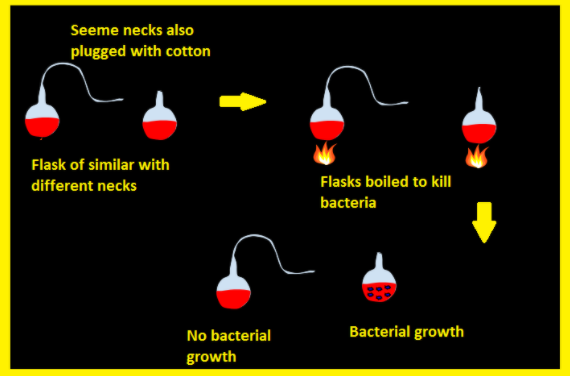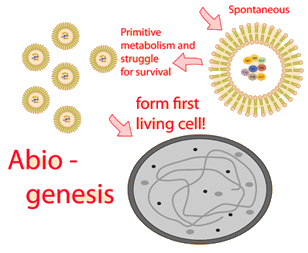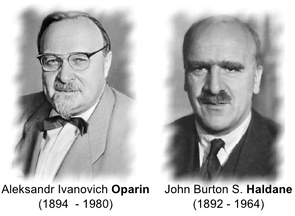The Oparin-Haldane theory, also known as the hypothesis of the origin of life, is a scientific theory that explains how life on Earth may have emerged from non-living matter. The theory was developed independently by Russian biochemist Alexander Oparin and British scientist J.B.S. Haldane in the 1920s and 1930s. It suggests that life on Earth may have arisen through a series of chemical reactions that took place in the Earth's early oceans and atmosphere.
According to the Oparin-Haldane theory, the Earth's early atmosphere was composed of simple gases such as methane, ammonia, and water vapor, which were present due to volcanic activity. These gases would have reacted with each other and with sunlight to form more complex molecules, such as amino acids and sugars. These molecules would have then formed into small, self-replicating structures called "protocells," which would have eventually evolved into the first living cells.
The Oparin-Haldane theory is supported by a number of lines of evidence. For example, scientists have been able to create simple organic molecules such as amino acids in the laboratory under conditions that mimic those of the early Earth. Additionally, evidence suggests that the Earth's early oceans were rich in organic molecules, which could have provided the building blocks for life.
Despite the significant progress that has been made in understanding the origins of life on Earth, many questions remain. For example, it is not yet fully understood how the first living cells emerged and how they were able to replicate themselves. Additionally, it is not clear what factors may have contributed to the development of more complex life forms, such as plants and animals.
Overall, the Oparin-Haldane theory is a powerful and influential explanation for the origins of life on Earth, and it continues to be an active area of research for scientists around the world. As new discoveries are made and our understanding of the early Earth continues to evolve, it is likely that the Oparin-Haldane theory will continue to be refined and developed.
Oparin and Haldane's Theory
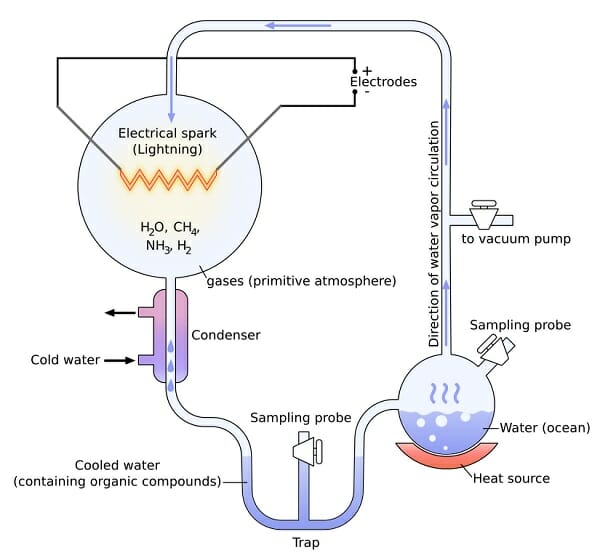
Figure 2: The panspermia theory suggests that life arrived on Earth from elsewhere, potentially from ejected debris following the impact of a meteor on another planet. Such cold temperatures could have allowed for many of the compounds implicated in the formation of life to maintain stability. This turnover can be used to drive active processes such as growth, and provide an insight into the chemical requirements underlying proto cellular behaviour. How did Miller and Urey test the Oparin-Haldane hypothesis? It results from inheritance of recessive genes. The impact of these results was so high that its mind-opening relevance hardly fades over time 2. As knowledge about 5 With the favor tipping towards theories which acknowledges the crucial role of genetic material for Darwinian evolution, such as the most widely supported Over the past couple of decades, observations of membrane-less organelles have been touted by the scientific community. Since there were no organisms to consume these compounds and no oxygen for the oxidation of intermediate compounds, the organic compounds slowly accumulated in the primordial soup.
Oparin and Haldane theory on origin of life

The theory of Oparin is known as the explanation proposed by the Soviet biochemist Aleksandr Ivánovich Oparin 1894-1980 to answer the question about the origin of life , once the theory of spontaneous generation is completely rejected. When the earth was formed, it was extremely hot with temperature of 5000 centigrades. Moreover, both hot and water strongly inhibits the protein formation of life. Origin of Life is a very complex subject, and oftentimes controversial. All the cells used this method to develop and reproduce. Alternative chemical paths to life have been proposed, and RNA-based life may not have been the first life to exist. Who proposed biochemical origin of life? Haldane envisaged that groups of monomers and polymers acquired lipid membranes, and that further developments eventually led to the first living cells.
What is the Oparin's theory?
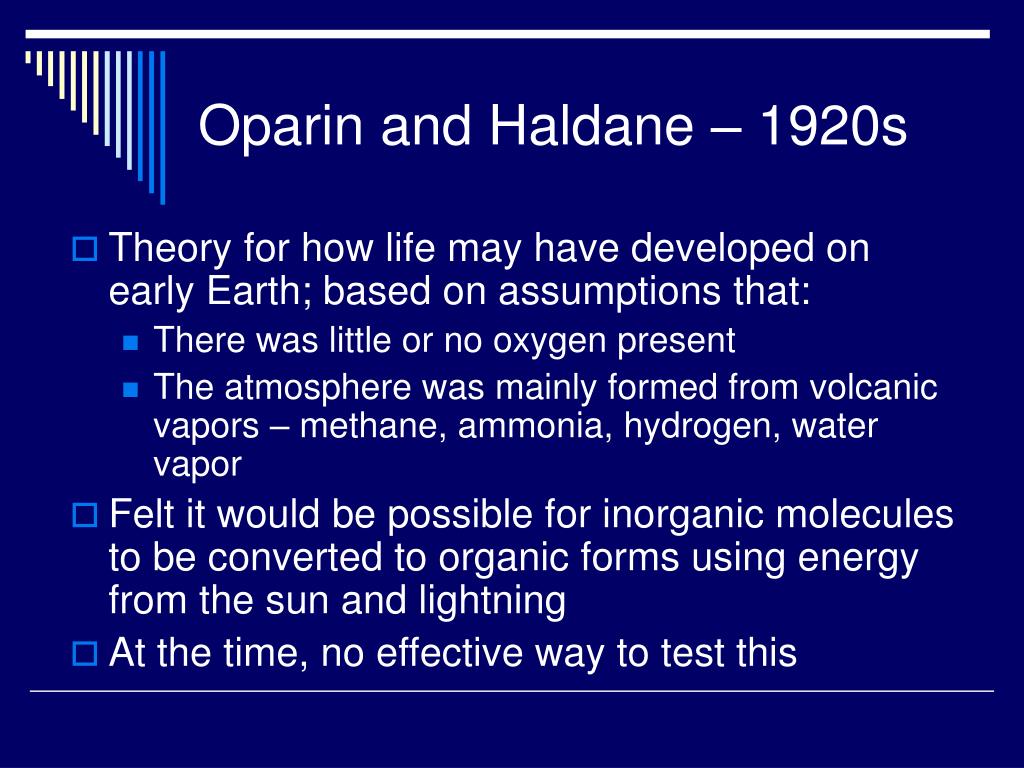
This oxygen was pure and richer than the anaerobic life form, this causes the anaerobic life forms to look for places that doesn't have little or no oxygen, such as in the deeper regions of the oceans or in soil, because the oxygen was toxic. The Oparin and Haldane theory is known as biochemical theory for the origin of life. Miller and Urey's analysis of the solution showed complex stepwise chemical reactions had occurred forming simple organic molecules, including amino acids - proving organic molecules could form under the conditions laid out in the Oparin-Haldane hypothesis. That inorganic material gave rise to organic material and, eventually life. In this idea, pre-biological changes slowly transform simple atoms and molecules into the more complex chemicals needed to produce life. The new crop varities can be in the form of seeds or cutting.
Oparin and Haldane's Theory Essay Example
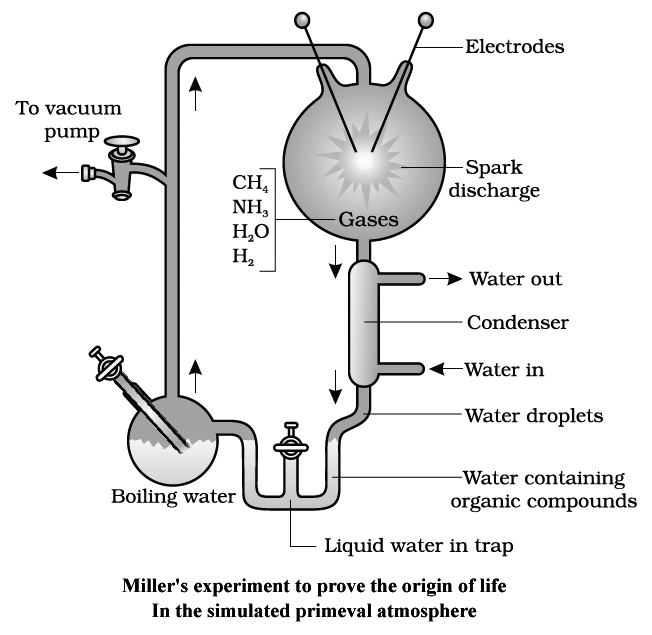
However, these recent observations show membrane-less organelles as not only a more dynamic organizational tool but have proved they are essential for functioning life. Also, how is the scheme of this theory. Spontaneous generation, however, refers to the disproven theory that complex life arises "spontaneously" and "continuously" from non-living matter. It was initially made up of hot gases and vapours of various chemicals. What is the most accepted theory of origin of life? Chemical evolution is considered the first step in the development of life on Earth. Miller designed the apparatus of glass tubes and flasks and created an atmosphere containing hydrogen, ammonia, methane and water vapour in one chamber of the apparatus and allowed condensed liquids to accumulate in another chamber.

